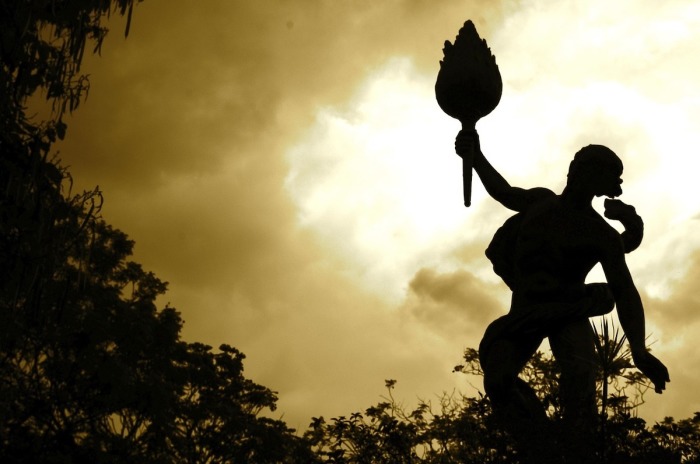Amazon love god statue near cathedral upsets Christians who call it a ‘mockery’ of faith
Cathedral dean voices support for new sculpture

In the cathedral city of Wakefield in West Yorkshire, England, complaints have been made about the recent unveiling of a new Amazonian love god statue, with some Christians finding it "offensive" to their faith.
The bronze sculpture was unveiled for the first time in the community last Friday despite months of opposition from area Christians who consider it a "mockery of Christianity," BBC reports.
The statue — titled "Amazonian Caiman God" — was created by Sleaford, Lincolnshire, artist Jason Wilsher-Mills and is among a handful of projects for a government-funded art trail.
First pictures of Wakefield’s new ‘Amazon love God’ statue https://t.co/OWb2jq8Yea#LocalToOssett#westyorkshirepic.twitter.com/GdmFwVkOM2
— LocalToOssett (@LocalToOssett) July 21, 2023
Roughly 66 complaints were submitted about the statue, with many taking issue with the fact that it is located on Cathedral Walk.
Simon Cowling, the dean of Wakefield Cathedral, told BBC's Local Democracy Reporting Service that he doesn't find the themes of the sculpture "in opposition to anything I find in Christianity."
"I warmly encourage members of the Christian community in Wakefield to engage seriously with what Jason Wilsher-Mills is seeking to say through his sculpture; how he deftly weaves together themes of family, place, disability, the care of God's creation, love, loss, humour and hope," Cowling said.
Wilsher-Mills, who was born in West Yorkshire, said that the sculpture was inspired by a painting of Victorian conservationist Charles Waterton that displays a caiman. He also said he was inspired to create the statue based on his parents' love story and his ties to the Wakefield area.
Wilsher-Mills added that his desire for the sculpture is that it would spread a "central message" about "love and hope."
The controversy surrounding the statue erupted late last year after plans for the statue were announced.
As The Guardian reported in March, Wilsher-Mills said the artwork was inspired by his life growing up as a child in Wakefield. It depicts "an Amazonian Caiman god, who would be holding the two lovers in his right hand, and making sure mom and dad arrived on the ferry boat to Walton Hall, the home of Squire Waterton."
Wilsher-Mills is also a disabled artist, who has used a wheelchair since age 11.
"This would serve as a metaphor for caring for the Earth, as well as being about personal love stories," he wrote, adding that the sculpture "celebrates disability, my northern working-class heritage and popular culture, through cutting-edge technologies and brightly colored, large-scale humorous, but challenging art."
Wakefield councilor Michael Graham said in December — after the approval decision was announced to have the sculpture placed on the trail — that there will be no plan to change the locations of the artwork that will be featured on the trail.
The plan for the city's art trail was to give Wakefield a "real sense of pride in our fascinating history and heritage and connect key points of the city together while ensuring that everyone is able to access culture and enjoy it," Graham said in a statement.
Nicole Alcindor is a reporter for The Christian Post.




























